Here are just a few of our favourite free things to do in Krakow:
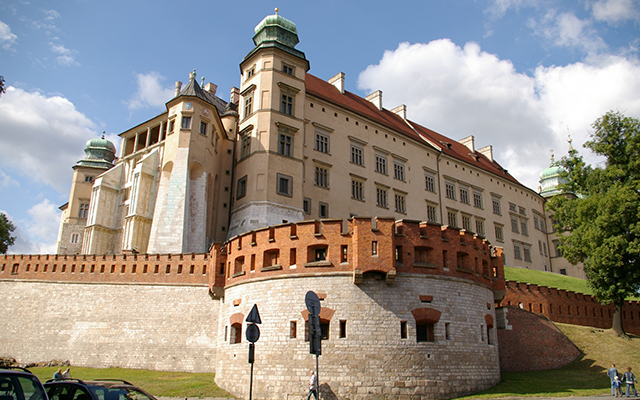
Explore Wawel Hill
Wawel Hill is, essentially the ancient heart of Krakow. As a hill on the banks of the Vistula River, Wawel Hill was easily defendable, making it the perfect site for a settlement.
In the 14th century, Wawel Castle was built on the hill. This castle was the residence of the kings of Poland for centuries and remains an important national historic monument and an iconic symbol of self-rule. Another notable building is the spectacular Wawel Cathedral, where the coronations of most of the kings of Poland took place.
Due to various extensions and developments over the years, the complex here is a stunning mix of Romanesque, Renaissance and Gothic architecture.
While entrance to some of the buildings, including the castle and cathedral, does incur a fee, there’s absolutely no charge to explore the castle grounds. As well as the castle and cathedral, make sure you look out for the Wawel Dragon statue, which still breathes fire every few minutes!
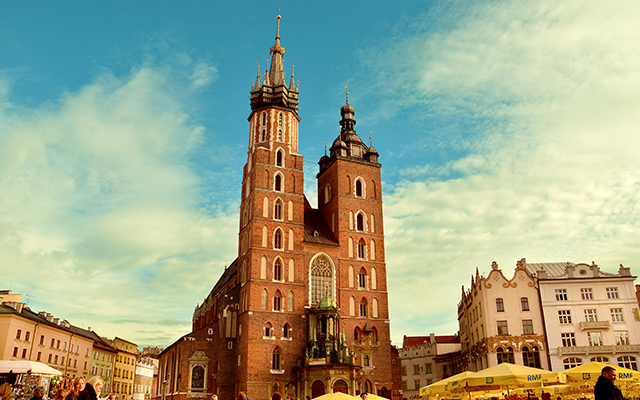
Soak up the atmosphere in Rynek Głowńy
Krakow’s Main Square, Rynek Głowńy in Polish, is the city’s main urban space and the largest medieval town square in Europe. In the heart of the city’s Old Town, a UNESCO World Heritage Site, there are some important sights situated around the square. These include St. Mary’s Basilica, the Cloth Hall, the Town Hall Tower and the monument to Adam Mickiewicz – the greatest Polish Romantic poet of the 19th century and a popular meeting place for Cracovians.
Right at the centre of the square is the Renaissance-style Cloth Hall. An important centre for trade throughout the centuries, you can now browse for souvenirs on the lower gallery, while the upper floor is branch of the National Museum, Krakow and houses a collection of 19th century Polish art.
One of the most recognisable sights around the square is the iconic St. Mary’s Basilica, which was built in the 14th century and is famous for its two towers of differing heights, which was apparently due to a serious case of sibling rivalry.
Of course, it’s completely free to come here, to the centre of Krakow, to soak up the atmosphere and learn more about the Polish culture, just by being immersed in it.
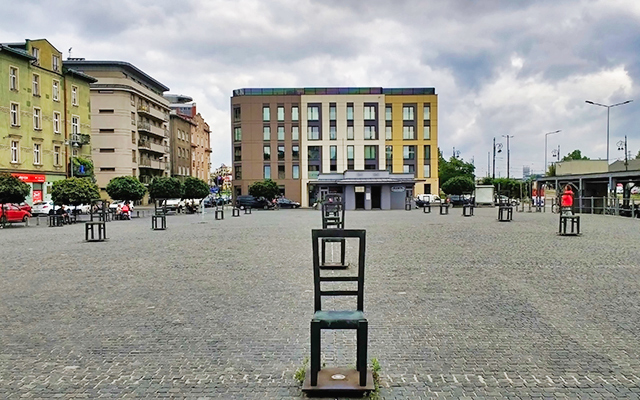
Remember the Holocaust at Ghetto Heroes Square
If your group is in Krakow to learn more about the Nazis and the Holocaust, then Ghetto Heroes Square will be on your list of places to visit – and it is completely free to do so.
The square is located in the district of Podgorze, which became the Krakow Ghetto when, in 1941, the remaining Jews in Krakow were forced to move there, many of them from the traditional Jewish district of Kazimierz.
After the deportations and final liquidation of the ghetto, the square was strewn with the abandoned belongings of the victims. This is reflected in the memorial here of 70 metal chairs spaced out around the square, symbolising departure and absence.
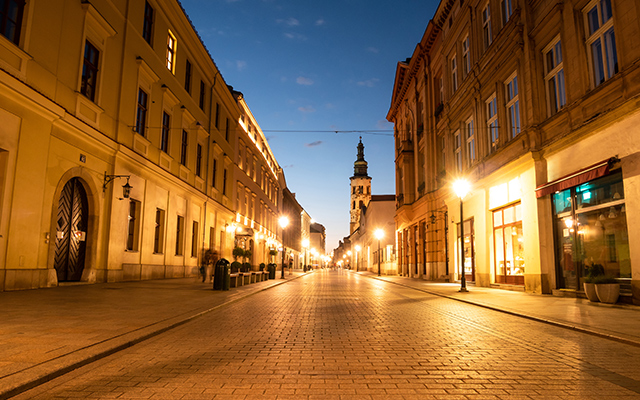
Stroll along the Royal Road
The Royal Road is completely free to walk and will take you past some of the most historic monuments in Krakow. This was the route followed by coronation and funeral processions and parades.
Starting at the northern end of the Old Town, the Royal Road passes through the centre and ends at Wawel Hill.
Sights you can look forward to seeing along the way include St. Florian’s Church, which holds the relics of Poland’s patron saint, the medieval barbican and the Floriańska Gate. You’ll pass through the Main Square, with all its attractions, before passing by several historic churches, before rising up the Wawel Hill towards the castle and cathedral.
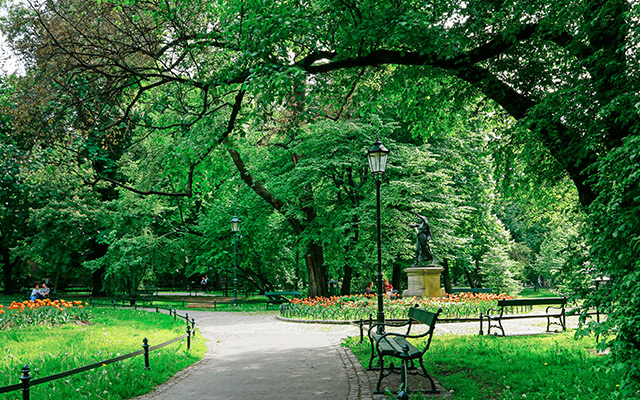
Chill out in Planty Park
After all that sightseeing and soaking up the atmosphere, you may well fancy taking a breather in more sedate surroundings. Luckily, Krakow is one of the greenest cities in Europe and has a fabulous variety of parks to explore.
One of our favourites is Planty Park, which wraps around the Old Town and so offers a quick escape from the buzz of the city, while still being close to everything.
As well as offering a bit of peace and quiet, the park is also home to over 20 statues of Polish historical figures, such as Copernicus, giving your students the opportunity to learn a bit more about Polish history.
Ready to start planning your school trip to Krakow?
Please don’t hesitate to contact us for further information or to request your tailor-made quote.